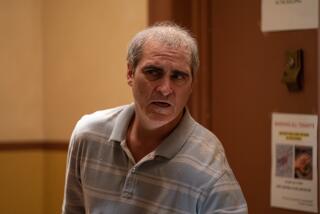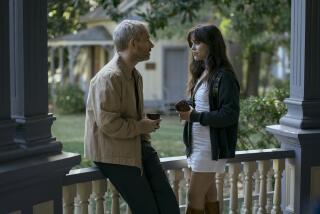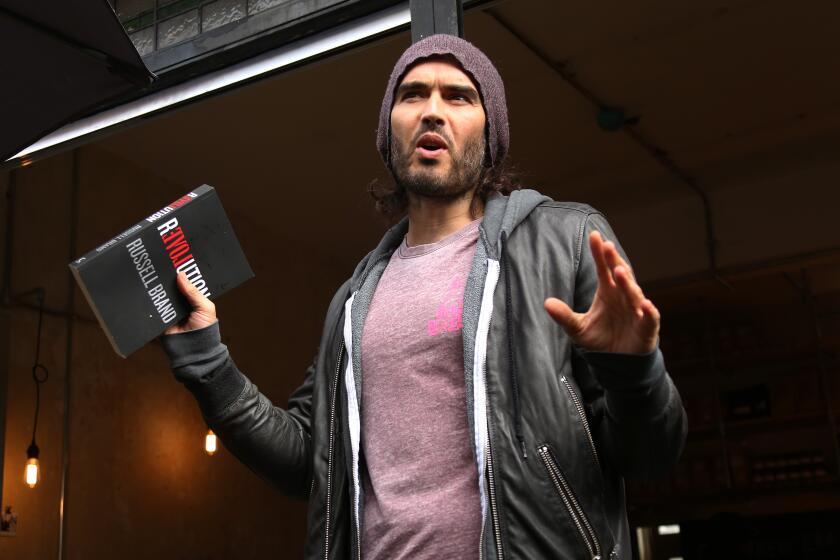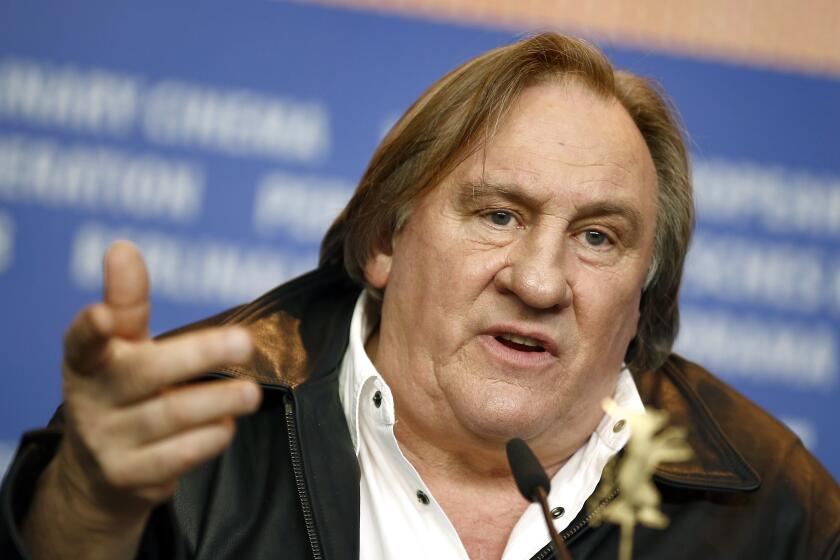One more trek as the logical Spock
It’s still strange to see Leonard Nimoy smile. For decades, Nimoy has been the impassive face of pure alien logic as “Star Trek’s” Mr. Spock, so it’s a bit unnerving to see him flash a big grin while recounting a very special presidential salute.
“During the campaign, Barack Obama gave me the Vulcan greeting at a fundraiser,” the 78-year-old actor said, holding up his palm in Spock’s signature split-finger gesture. “That was pretty memorable. Timothy Leary gave me the salute once too. It’s something that happens to me quite often, as you can imagine.”
A whole new generation of fans is learning how to pry its fingers apart with the release of the 11th “Trek” film, which hit warp speed on its opening weekend, taking in $76 million at the box office.
For the filmmakers, Nimoy is a living link to the history of the franchise that began on television in the 1960s as “ ‘Wagon Train’ to the stars” (as it was pitched).
The crew is new and young, with 28-year-old Chris Pine as Capt. James T. Kirk and 31-year-old Zachary Quinto as Spock, but Nimoy (thanks to a time-travel plot) has a key role as a second Spock, a solemn, gray-haired visitor from the future who is being pursued by a rogue Romulan named Nero (Eric Bana) on a blood quest.
Nimoy’s presence gives the franchise revival “a very important sort of approval -- there’s a torch being handed off there,” according to Pine, and director J.J. Abrams described the elder actor’s participation in the film as “essential to our goal to serve and celebrate the history of ‘Star Trek’ with this story and create something new and exciting.”
Nimoy, for one, never expected to put those pointy ears on again. He was leery when approached by Abrams and screenwriters Roberto Orci and Alex Kurtzman, but after hearing them explain their vision of the latest chapter of the space epic, he was intrigued. (On Tuesday, Nimoy also drops in on the first half of the two-part season finale of “Fringe,” the Fox sci-fi series from Abrams, Orci and Kurtzman.)
“This is the first and only time I ever had a filmmaker say, ‘We cannot make this film without you, and we won’t make it without you,’ ” Nimoy said with another one of those startling smiles. “J.J. Abrams said that -- that’s a pretty heavy statement. And when you see the film, you see how central the character is to the story they’ve told.”
Nimoy stands as “the figure of credibility” for the franchise, as Orci put it, which sounds like an unintended ding on William Shatner, the original Kirk and an actor who publicly lobbied for a role in this new $140-million film. Nimoy and Shatner remain good friends after all these years and one reason is an understanding of the benefits of selective silence.
“Bill and I have spent some time together, we have dinner periodically, and frankly, it’s a subject that we avoid,” Nimoy said. “It’s not a fun subject right now. And I sympathize with him, because I was left out of the ‘Next Generation’ films. It is what it is.”
--
Spock-less ‘Treks’
The last “Trek” film for Nimoy had been in 1991, and he felt like an exile as he watched four straight Starfleet movies be made without Spock at all. Unlike Shatner, he reached a point where he was uninterested in another ride aboard the Enterprise.
“In the ‘Next Generation’ movies, I did not appear and Kirk was killed,” Nimoy said. “It was as though someone was trying to create a dividing line between the original, classic series and the ‘New Generation’ crew. I was out and Bill was dead. I assumed that was it, it’s over. I didn’t feel great about it, but I was OK with it. I’ve had my run, and I had a lot of other interesting things I wanted to do. I didn’t look back.”
Nimoy, nibbling on brioche and sipping Earl Grey tea at a Beverly Hills restaurant, paused to say hello to an art gallery friend at a nearby table. As “Trek” faded from his life, his longtime love of art and photography became his dominant pursuit. He and his wife, Susan Bay, are fixtures in the local arts community, and he spoke proudly of a grant program they have established to help artists.
For an erudite man, there are aspects of his “Trek” career that have been a bit hard to swallow. He acknowledged that all too often the hardware and catchphrases seemed to become more important than the characters themselves. That is not the case with the new film, he said.
“It’s a gigantic canvas with wonderful, intimate character-driven moments,” Nimoy said. “My wife is not an action film fan, she’s not a science fiction or adventure fan. This isn’t the type of film we would choose to go see together. She respects what ‘Star Trek’ has meant for us as a career and as a source of creating a great lifestyle for us. But we watched this film and around 15 minutes before it was over she turned to me and said, ‘I don’t want this movie to end.’ That is big stuff.”
The role of Spock earned Nimoy three Emmy nominations and, much more than that, a singular spot in television history as the most iconic alien this side of Superman. And, like George Reeves, who portrayed the Man of Steel, Nimoy has felt frustrated that his wider acting career has been smothered by his trademark role. Still, he’s always maintained a deep fondness for the character of Spock, who had the mien of a holy man devoted to science and an internal struggle with his pent-up emotions.
“When these guys talked it reawakened something in me,” Nimoy said. “It put me back in touch with something I cared about. I had a passion for ‘Star Trek’ when we were doing it, and sometimes there were fights over content and ideas and subject matter and execution. [The show’s creator] Gene Roddenberry and I didn’t always see eye to eye, sometimes there were battles. Other producers came on to the show, and sometimes there were battles. Friendships ended -- seriously -- over particular scenes.”
--
A varied career
After “Star Trek’s” initial TV run, Nimoy went on to appear on “Mission: Impossible” and host the show “In Search of . . . “ and take on roles in film and assorted television movies as well as onstage, but his career always came back to Spock. He also became a director, a career pursuit that he calls “an afterthought, something I backed into”; among his credits are “Star Trek III: The Search for Spock” (1984) and “Star Trek IV: The Voyage Home” (1986), the latter the highest-grossing film in the franchise, although this new model will soon warp past “Voyage Home’s” $109-million domestic mark.
Nimoy said that watching the new film was “a very emotional experience for me. The cast recaptures the chemistry that I felt was so important to the original series. I never stopped caring about ‘Star Trek,’ but this made me care even more about it.”
There is one scene in the new film where Nimoy and Quinto meet and speak, which seems to test the conventions of comic-book physics but gave Nimoy a final scene with his old friend Spock that could be a heartfelt handoff.
“For me, that scene was almost like the fantasy a father would have about talking to his son,” Nimoy said. “To offer some ideas, some guidance, affection and love. . . . I was pretty much playing who I am today. I didn’t have to search very hard to find the character I play in this movie. And I think that was the end. But you know, I’ve thought that before about Spock.”
--
More to Read
Only good movies
Get the Indie Focus newsletter, Mark Olsen's weekly guide to the world of cinema.
You may occasionally receive promotional content from the Los Angeles Times.






